Ever since I was a child airplanes have fascinated me, and that does not come hard to explain as my father has many hours logged on as a private pilot. Even though he does not talk much about it, I have been able to dig out some of his careful words about his past in aviation. This time, I will write about one particular plane my father and his cousin owned and flew for more than 10 years, one that has intrigued me as far as long as I can remember: the North American P-51D Mustang.
My father, Roberto Ibargüen, got into flying when he was 21 years old, back in 1963. He did so because he had a lot of traveling to do in Guatemala, but mostly because of his love for aviation. In 1967, he got news about a North American pilot who owned a P-51D Mustang and had stopped by in Guatemala. He and his cousin Enrique, who also became a pilot, wasted no time and got in touch with the person, a very respected pilot named Robert “Bob” Love who came to the country wanting to invest in land. My father and Enrique talked to Bob about their interest in buying the mustang and after a few day’s of negotiating they had a deal. It was the opportunity of a lifetime!
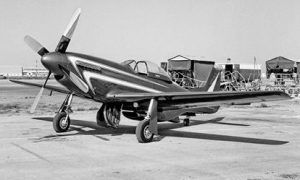
They bought the airplane and began fixing it up as it had been sold with a cracked engine head, but besides that, the airplane was in a pretty good shape, especially because it had not seen active military duty. The airplane was then registered in Guatemala as TG-REI; REI stands for Roberto and Enrique Ibargüen.
Being that the P-51D is a very particular airplane to fly, my father and Enrique went to receive a course in Sarasota, Florida, designed specifically for checking out pilots in the P-51D. The airplane used in that opportunity is still flying and is now known as “Crazy Horse”, which is owned and operated by Stallion 51 in Florida. Meanwhile they were able to acquire a brand-new Rolls- Royce Merlin engine to replace the one with the cracked head.
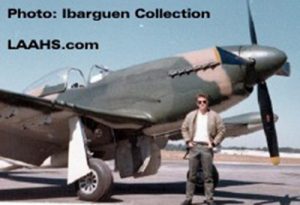
Once the repairs on the Mustang were finished, it was painted in an overall light gray color, which it kept for some time. This color scheme, however, was not the nicest looking so, eventually, the paint was removed and the airplane was in an overall metal color, which was more of a natural look for a P-51D.
My father had many friends in the Guatemalan Air Force -FAG for its initials in Spanish- who were excellent pilots, and in those days, the air arm had the funding to put up many spectacular airshows. There had always been a rumor that no civilian airplanes faster than any of the FAG’s aircraft would be permitted in the country, but that myth came to rest when TG-REI arrived in Guatemala, as it had all of the armor removed. making it much lighter and faster than the FAG P-51Ds.
In any case, my father was invited to perform in TG-REI during FAG celebrations and was awarded recognitions for his participations. In one opportunity, the famed pilot Bob Hoover came to Guatemala to perform his spectacular routine and he even made a demonstration flying the TG-REI.
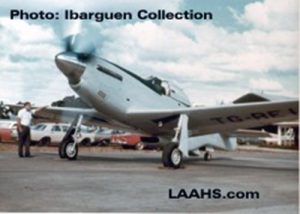
Many of my father’s closest friends got a ride in the P-51D, as did pilots in the Aeroclub de Guatemala. One time, my mother was ready for the ride of her life, she put a foot inside the cabin and took a look at everything in there and decided she was not going, I suppose she felt intimidated by the plane. (All the Cavalier-modified Mustangs had a small seat for a passenger in the back of the cockpit, where the bulky WWII radios used to be.)
Unfortunately, I never got a ride in the airplane as I was still a toddler when TG-REI was sold, but there is not a day that goes by when I don’t dream about what it would have been to be inside that beautiful machine, with my father commanding it.
Time has gone by and my father has not flown for some years, even though I know he is still a great pilot, and for me, a hero…
TG-REI Data
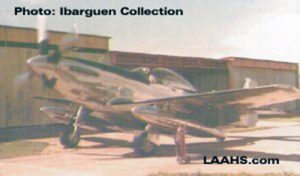
This Mustang was registered in Guatemala during January 1968 as TG-REI (C/N 122-40970, ex USAAF 44-74430) to Roberto and Enrique Ibargüen. The Guatemalan registration was cancelled when the plane was sold as N2265P to William Harrison and Terry Randall of HArRan Aircraft Sales in May 1978; unfortunately, during the ferry flight back to the U.S., it crashed in Tuxtla Gutiérrez, Chiapas, Mexico, on June 05, 1978.
Initially, this P-51D was delivered to the Royal Canadian Air Force with the serial 9588, on November 8, 1950, and was sold to James DeFuria / Intercontinental Airways as N8673E on May 14, 1959. From then on, the plane had several owners:
- AeroEnterprises, Elkhart (Indiana), June 18, 1960.
- John Hibbard, Corcoran (California), March 03, 1961.
- Gerald T. Smith, Bakersfield (California), April 13, 1962.
- Ronald A. Hevle, Bakersfield (California), January 23, 1963.
- Glenn Johnson Realty, Sacramento (California), September 16, 1964.
- Robert J. Love, San Jose (California), May 11 1965.
- Robert J. Love, San Salvador, El Salvador as YS-149P, 1965.
- Roberto and Enrique Ibargüen, Quetzaltenango, Guatemala as TG-REI, January 1968.
- William Harrison and Terry Randall as N2265P, May 1978.
- Lynn Florey as N52HA in June 1978.




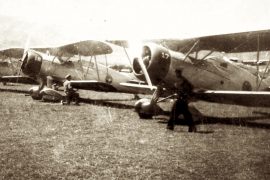
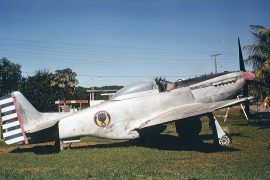

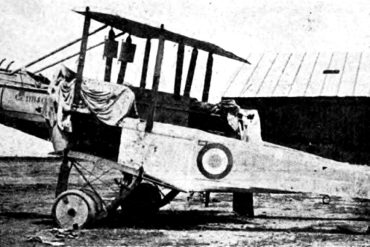
Great story!
I watched TG-REI flown by Bob Hoover in that FAG Airshow. He also flew an astonishing perform in a Commander Shrike. Wonderful memories.
I never knew of TG-REI again. Sad that was crashed in Tuxtla.
I Googled TG-REI and found this precious articule.
Thank you for it.
The story I heard from my friend, pilot Bob Love who once owned the aircraft, is that when it was being ferried to the US by a hired pilot and as it was on final approach to Tuxla, the engine coolant line running under the cockpit broke or developed a high pressure leak. It blew exceedingly hot coolant all over the pilot who tried to land while being scalded. He didn’t make it and the aircraft crashed.
Muy interesante historia del TG-REI y de las vidas de las personas que volaron en él, así cómo de todos aquellos, que al verlo volar; sus sueños volaron con el…